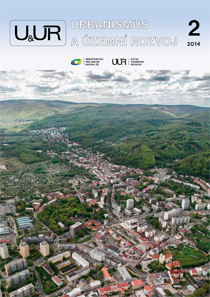
Analysis of the local population’s relation to the transformation of the mining area of Podkrušnohoří, by Martin Pospíšil
The vision of the prospective transformation of the mining area in the foothills of the Ore Mountains (Podkrušnohoří), as expressed by the physical planning documentation of the Region of Ústí nad Labem, should be enhanced by a more detailed framework determining a stable and sustainable trajectory of the region’s future development. When taking into account local specifics in the planning of the area’s transformation, the local population is a relevant actor and participant. A sociological research has analyzed the attitudes of the population of Podkrušnohoří to current socioeconomic developments in the region and mining and post-mining activities. The results of the research were replenished and supported by the opinions of representatives of municipal administrations. The research has helped us to understand how this structurally affected region is perceived by its inhabitants, what factors have an influence on their attitudes and reactions, and which impacts these factors can have on the stability and social cohesion of the population.
The metropolitan region of Munich in the context of Bavarian regional planning, by Milan Körner
This article is focused on the development of the metropolitan region of Munich and its position within the Central European and Alpine areas. It is based on Prague and other metropolises in Central Europe, a paper given at the international conference On Spatial Planning on 11 April 2013 in Prague, and some chapters of the research task Assignment Methods in Physical Planning. However, most of these sources were comparative, observing multiple metropolitan regions and agglomerations. The present article deals with the approaches and outcomes of regional planning clearly different from the current situation in the Czech Republic. Munich is a dynamic region with mostly positive characteristics. The article presents the region as such, rather than making a comparison with Czech regional planning.
Landscape like Cinderella: Is physical planning going to be her prince? by Dagmar Saktorová
Various fields such as environment protection, agriculture and heritage conservation are concerned with landscape preservation. A problem is their excessive specialization in certain issues that are important in their perspective. Physical planning should comprise all these viewpoints, evaluate the landscape in a comprehensive way and, at the same time, protect and improve the state of the landscape as a milieu in which people live.
The housing estate of Janov: fi ve years of a process of revitalization, by Věra Thea Zoubková
More and more cities suffer from deprivation in residential areas. Where prevention fails continuous and complex revitalization must take over. The location of the housing estate of Janov, highlighted in the media in 2008 for its poor environment, problems of economic stagnation and social exclusion, and right-wing clashes with the police, embarked on its path towards spatial revitalization and a decrease in levels of social exclusion five years ago. The process of revitalization persistently faces various challenges, but inspiring solutions have already been found to many problems.
Physical planning and spatial control in the Netherlands, by Zdeněk Opravil
Physical and transportational planning has its geographic, economic and environmental limits. It is closely linked to the social and political conditions of each country and, at the same time, influenced by the forces of globalization. After all, planning is not a unilateral process but one that generates complex questions and requires understanding of the background and interaction of key factors in political decision-making. The author of this article presents some basic principles of spatial control and organization of public administration in the Netherlands, which by its content and approach has become a model example for the development of a number of cities and settlements.